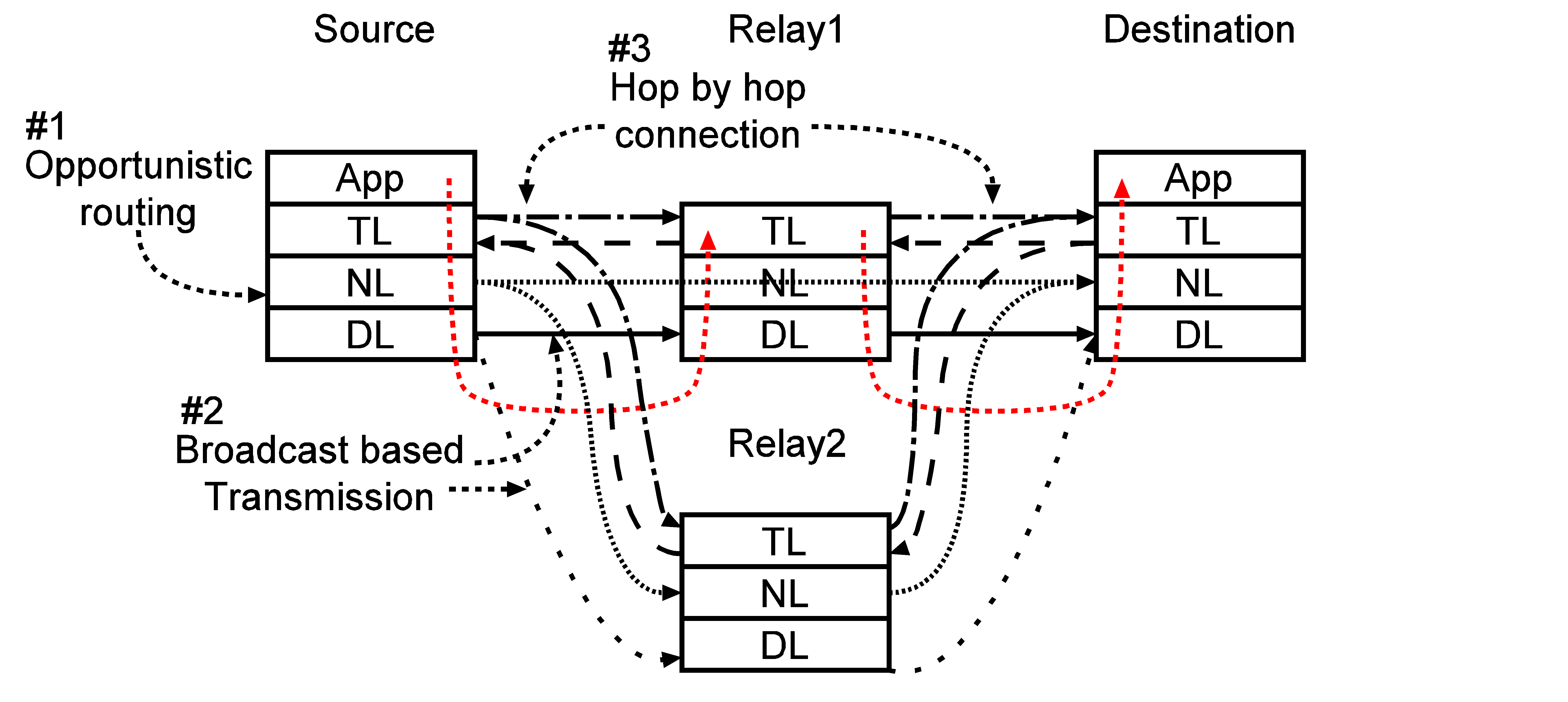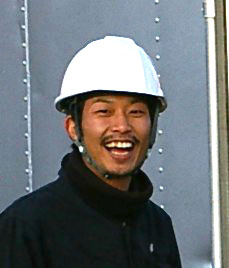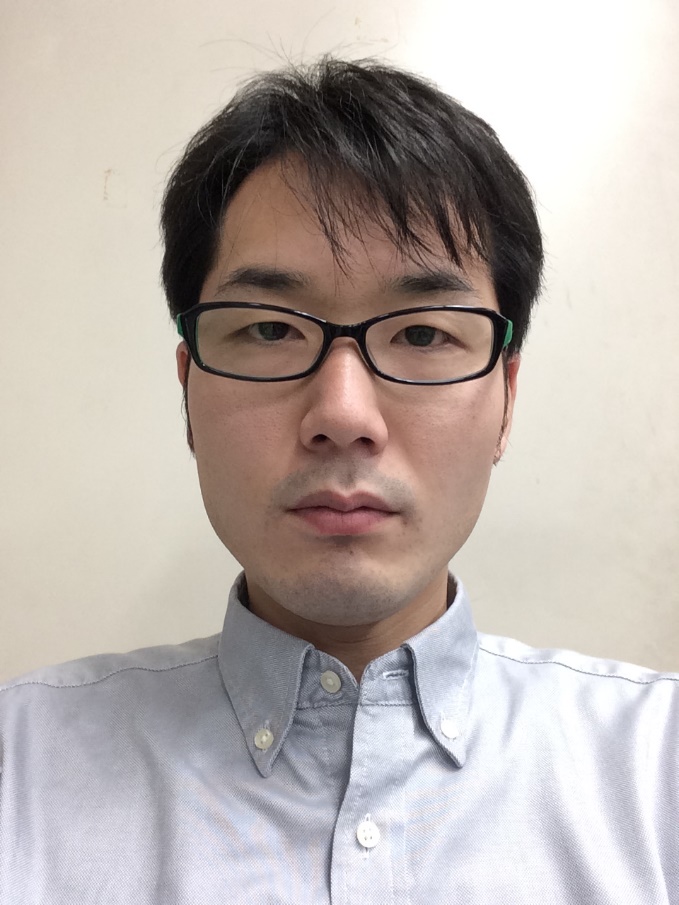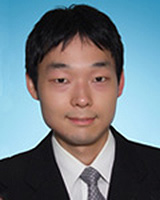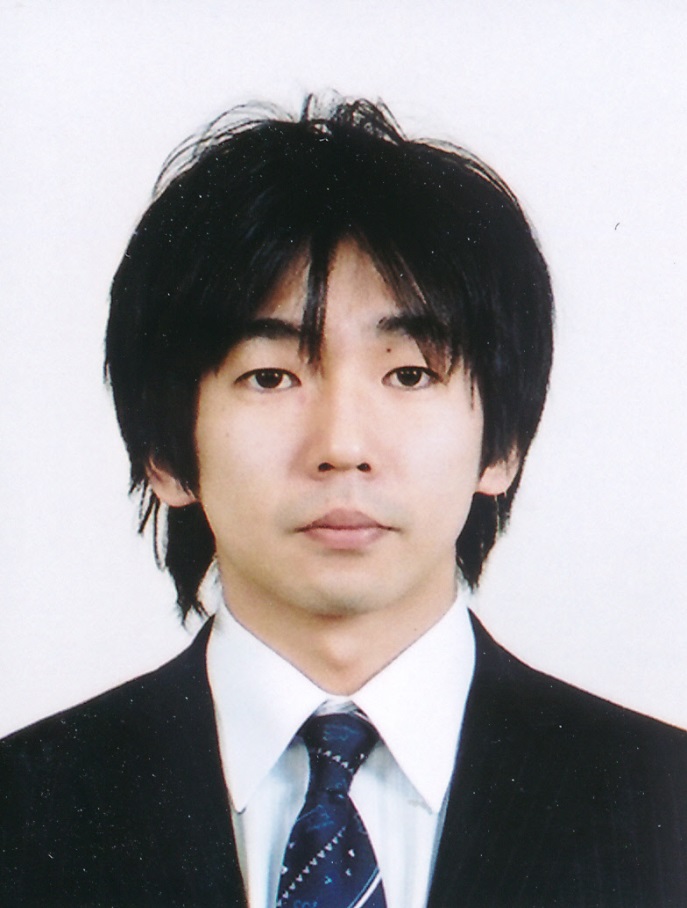March 2016 Issue
Topics
2015 Tenure Track Research Reports Meeting
Faculty members of the University of Electro-Communications, Tokyo (UEC, Tokyo) Tenure Track Program presented their latest research findings at the "2015 Tenure Track Research Reports Meeting", held between 16:00 and 18:00 on 22nd March 2016.
This year, five tenure track assistant professors described their latest results and future plans on: context-aware wireless networks; research on the Earth's upper atmosphere using optical and radio remote sensing; multimodal categorization robots for forming concepts and acquisition of words; state space model for Kernel based smoothing; and network architectures for ubiquitous networks.
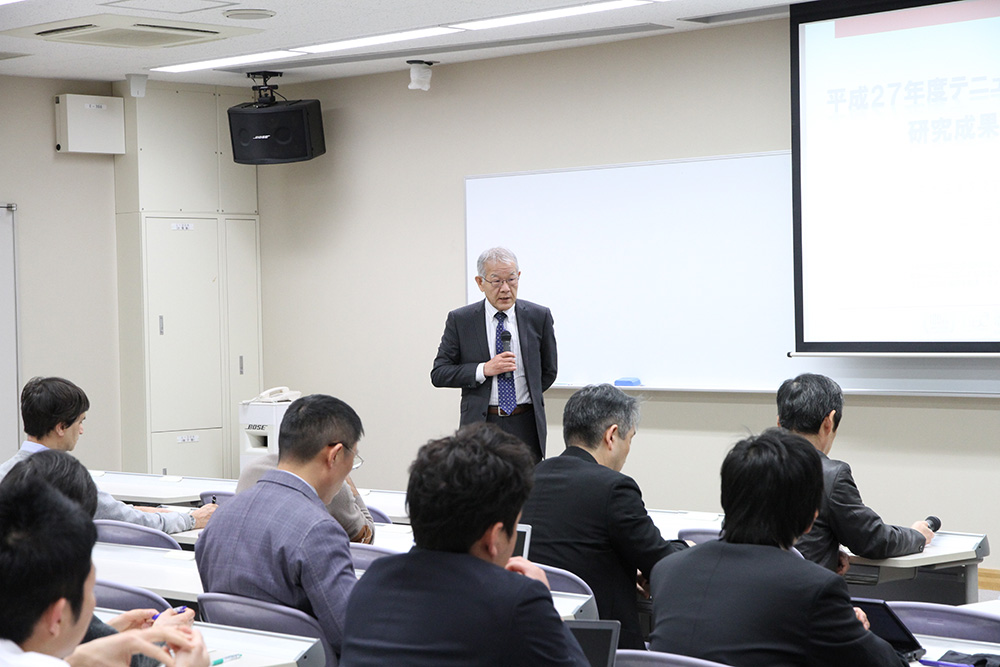
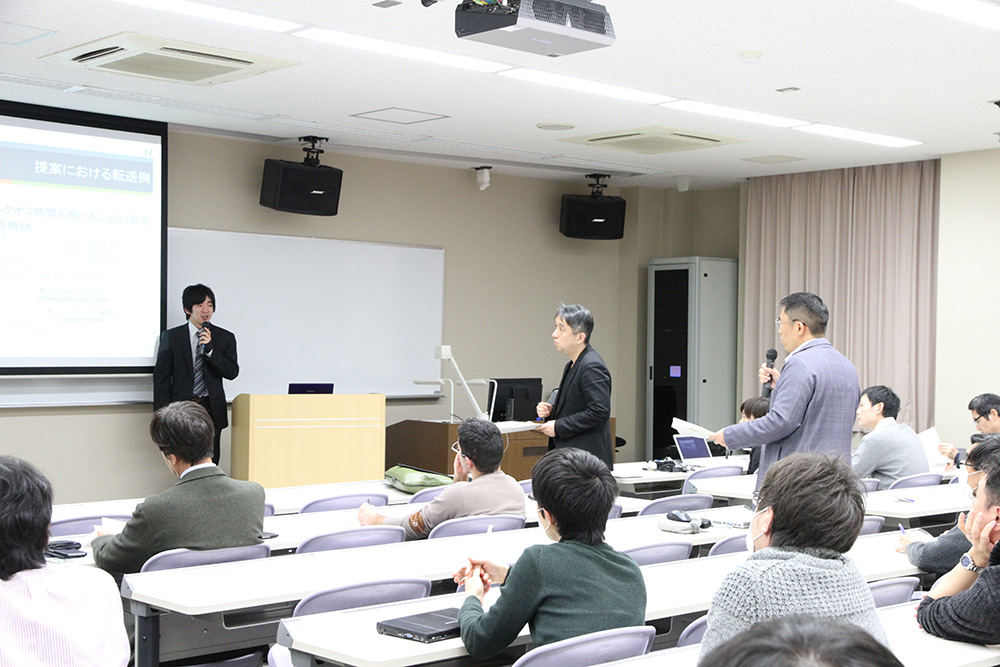
Chaired by Masahisa Yanagisawa, Department of Communication Engineering and Informatics and Maomi Ueno, Department of Social Intelligence and Informatics, the meeting was opened by UEC Tokyo President Takashi Fukuda who emphasized the importance of the tenure track program for nurturing young faculty members who will lead and determine the direction of future research at the university.
Highlights of talks given by the five members of the UEC Tokyo tenure track program at this meeting.
Suhua Tang, Department of Communication Engineering and Informatics
Context-aware wireless networks
Smartphones and other such mobile devices are ubiquitous, offering a myriad of applications. For example, an appropriate 'app' enables users to determine their location on the Earth and navigate further afield. Here, Suhua Tang is exploiting the GPS function of mobile devices to reduce pedestrian-vehicle traffic accidents by transmitting the location of pedestrians to vehicles in real-time. Specific aims of this research include precise pedestrian positioning, transmission control based on the precise circumstances or 'context' of pedestrians, and reducing power consumption of mobile devices by the 'wake up' control. This is the basis for the so-called 'context aware' wireless network technology.
Further information
- Suhua Tang, Yi Yu, Roger Zimmermann, and Sadao Obana, Efficient geo-fencing via hybrid hashing: A combination of bucket selection and in-bucket binary search," ACM Transactions on Spatial Algorithms and Systems, vol.1, no.2, (2015) doi: 10.1145/2774219.
- Suhua Tang, Kiyoshi Saito, and Sadao Obana, "Transmission control for reliable pedestrian-to- vehicle communication by using context of pedestrians," in Proc. IEEE ICVES'15, Yokohama, Japan, pp. 41-47. (2015) doi: 10.1109/ICVES.2015.7396891.
- Suhua Tang, Hiroyuki Yomo, and Sadao Obana, "Dynamic threshold selection for frame length-based wake-up control," IEEE Wireless Communications Letters, vol.4, no.6, pp.609-612, (2015) doi: 10.1109/LWC.2015.2475268
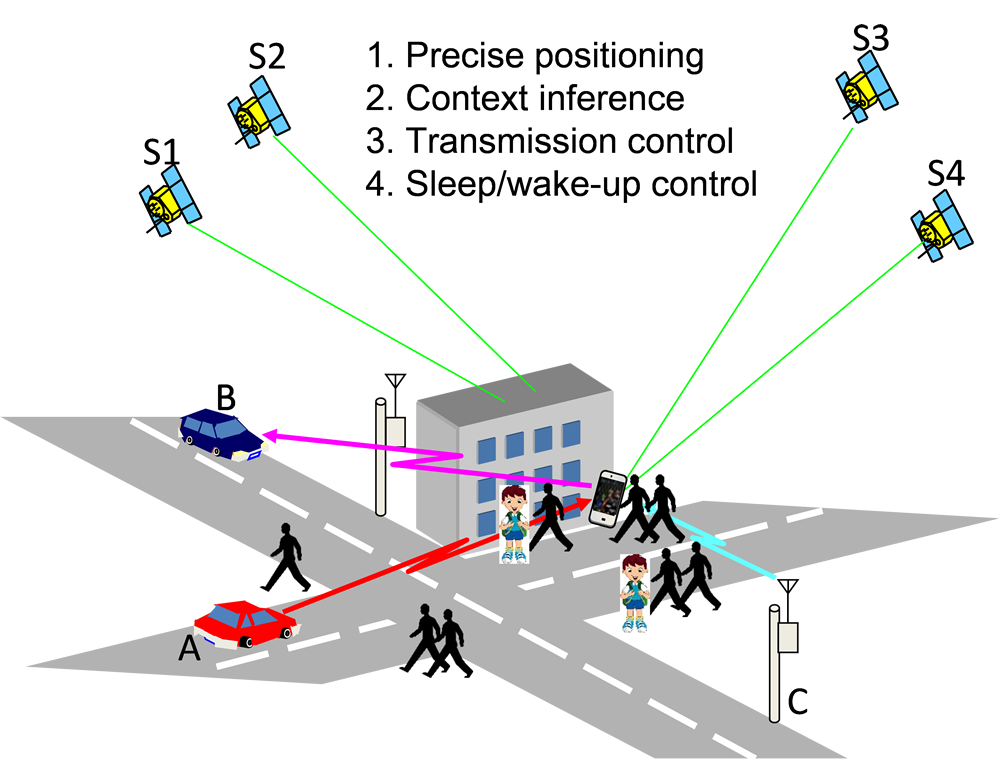
Takuo Tsuda, Department of Communication Engineering and Informatics
Research on the Earth's upper atmosphere using optical and radio remote sensing
Scientists have been fascinated by the composition of the Earth's atmosphere for centuries. For example, in the late 1920s researchers first reported that the glow of light in the Earth's atmosphere contained light from sodium atom. Now, Takuo Tsuda is shooting laser beams into the upper atmosphere and analyzing the resulting scattered light back on earth to study the sodium layer and other layers of the outer atmosphere for future space utility and for insights into climate change. The research is carried by remote sensing at facilities in northern Europe, Japan's Showa Station in Antarctica.
Further information
- T. T. Tsuda, S. Nozawa, T. D. Kawahara,T. Kawabata, N. Saito, S. Wada, Y. Ogawa, S. Oyama, C. M. Hall, M. Tsutsumi, M. K. Ejiri, S. Suzuki, T. Takahashi, and T. Nakamura, "Decrease in sodium density observed during auroral particle precipitation over Troms, Norway," Geophys. Res. Lett., 40, 4486-4490, (2013) doi: 10.1002/grl.50897.
- T. T. Tsuda, X. Chu, T. Nakamura, M. K. Ejiri, T. D. Kawahara, A. S. Yukimatu, and K. Hosokawa, "A thermospheric Na layer event observed up to 140 km over Syowa Station (69.0◦S,39.6◦E) in Antarctica," Geophys. Res. Lett., 42, 3647-3653, (2015) doi: 10.1002/2015GL064101.
- T. T. Tsuda, S. Nozawa, T. D. Kawahara, T.Kawabata, N. Saito, S. Wada, C. M. Hall, M. Tsutsumi, Y. Ogawa, S. Oyama, T. Takahashi, M. K. Ejiri, T. Nishiyama, T. Nakamura, and A. Brekke, "A sporadic sodium layer event detected with five-directional lidar and simultaneous wind, electron density, and electric field observation at Troms, Norway," Geophys. Res. Lett., 42, 9190-9196, (2015) doi: 10.1002/2015GL066411.
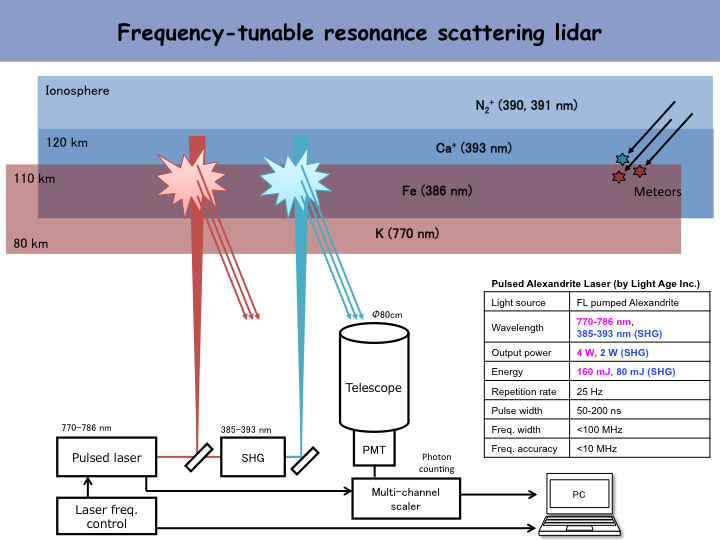
Tomoaki Nakamura, Department of Mechanical Engineering and Intelligent Systems
Multimodal categorization robots for forming concepts and acquisition of words
Human cognitive functions rely heavily on categorising things and are able recognize them by a minimum of flexible and predictive cognitive processing, without having to refer to a whole lifetime of experiences. It is possible to form such categories by classifying perceptive information. Here, Tomoaki Nakamura is studying the meaning of words by considering a category as a concept and connecting it with words. One of the applications of this study is to develop intelligent robots that can associate experiences with concepts and words, with the ultimate goal being to clarify the "human language acquisition process."
Further information
- Tomoaki Nakamura, Takaya Araki, Takayuki Nagai and Naoto Iwahashi, "Grounding of Word Meanings in LDA-Based Multimodal Concepts," Advanced Robotics, Vol.25, pp. 2189-2206, (Apr.2012) doi: 10.1163/016918611X595035.
- Tomoaki Nakamura, Takayuki Nagai, Kotaro Funakoshi, Shogo Nagasaka, Tadahiro Taniguchi, Naoto Iwahashi, "Mutual Learning of an Object Concept and Language Model Based on MLDA and NPYLM," IROS2014, pp.600-607, (Sep. 2014).
- Tomoaki Nakamura, Yoshiki Ando, Takayuki Nagai, Masahide Kaneko, "Concept Formation by Robots Using an Infinite Mixture of Models," IROS2015, pp.4593-4599, (Sep. 2015) doi: 10.1109/IROS.2015.7354031.
- Tatsuya Aoki, Takayuki Nagai, Joe Nishihara, Tomoaki Nakamura, and Muhammad Attamimi, "Multimodal Learning of Object Concepts and Word Meanings by Robots," NIPS 2015 Workshop: Multimodal Machine Learning, (Dec. 2015).
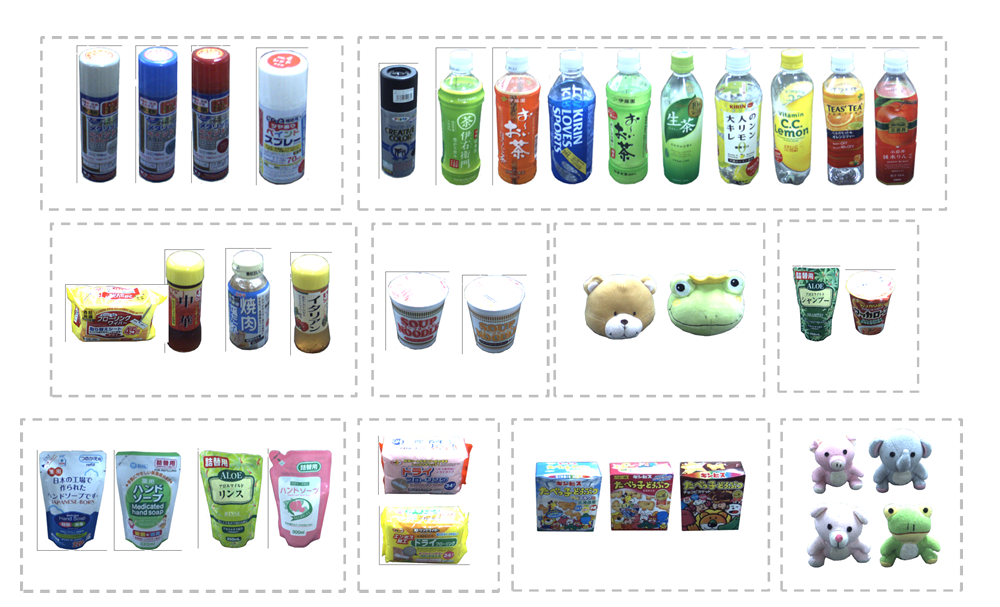
Yu Nishiyama, Department of Social Intelligence and Informatics
State space model for Kernel Bayes smoothing
Mathematicians employ Kernel methods in machine learning to give "computers the ability to learn without being explicitly programmed," (Arthur Samuel, 1959). Furthermore, state-space models are used to analyse time-series data generated in scientific research. Here, Yu Nishiyama is developing a new smoothing algorithm of state space model based on Kernel Bayesian inference. This research is expected to enable the development of mathematics models for predicting outcomes of research data in science and engineering.
Further information
- Y. Nishiyama, A. H. Afsharinejad, S. Naruse, B. Boots, L. Song, "The Nonparametric Kernel Bayes' Smoother," AISTATS2016.
- K. Natori, M. Uto, Y. Nishiyama, S. Kawano and M. Ueno, "Bayes factor-based learning Bayesian networks," AMBN2015.
- Y. Nishiyama, A. H. Afsharinejad, S. Naruse, B. Boots, L. Song, "Nonparametric Smoothing on State Space Models with Kernel Mean Embeddings," STM2015 & CSM2015.
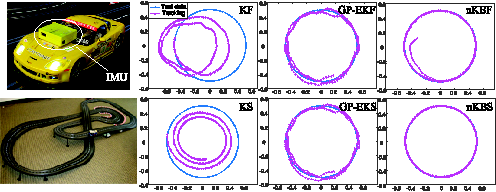
Ryo Yamamoto, Department of Information Network Systems
Network architectures for ubiquitous networks
Advances in information-communications technology enables users to connect not only computers and smartphones but other "things" to the internet such as televisions, gas and electricity meters. This new and rapidly expanding field of the "internet of things" (IoT) is a rapidly emerging field of research. Here, Ryo Yamamoto is devising innovative networking architecture for ubiquitous networks to supersede and overcome the shortcomings of conventional TCP/IP protocols. Issues to resolve with TCP/IP networks include the fact that an IP address is allocated to each individual device terminal, with associated routing, which is difficult to monitor and manage in ubiquitous networks.
Further information
- T. Yamazaki, R. Yamamoto, T. Miyoshi, and Y. Tanaka, "Autonomous retransmission terminal selection with neighbour terminals for ad hoc networks," IEICE Tran. (B), vol.J98-B, no.6, pp.484-496, (June 2015) doi: 10.1109/APNOMS.2014.6996593.
- S.D. San, R. Yamamoto, and Y. Tanaka, "DTN reliability enhancement with end-to-end retransmission in the presence of a complete route," ITC-CSCC 2015, (June 2015).
- T. Yamazaki, R. Yamamoto, T. Miyoshi, T. Asaka, and Y. Tanaka, "Load reduction method based on hop count and neighbour relation in opportunistic routing," IEICE General Conf., pp.S-6-S-7, March 2016.
- T. Sakaguchi, T. Yamazaki, R. Yamamoto, and Y. Tanaka, "Block-based transmission with adaptice reliability control for ad hoc networks," IEICE General Conf., p.111, (March 2016).
